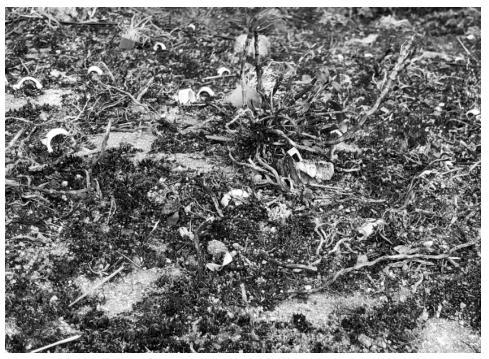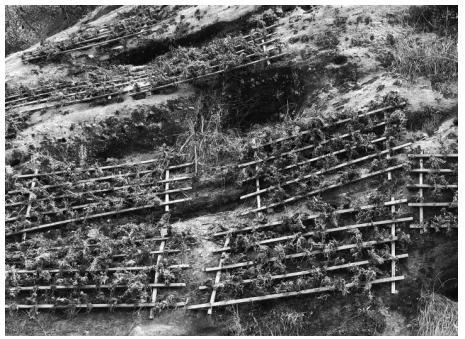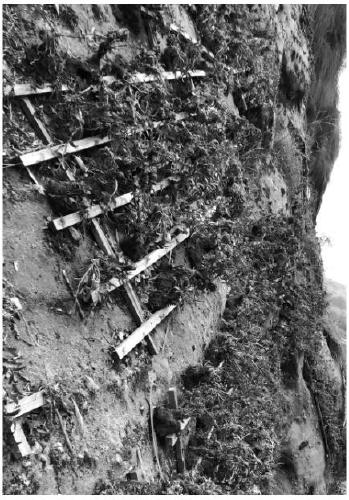A method of using Selaginella as epiphytes to cultivate Dendrobium officinale
A technology of dendrobium candidum and epiphytes, which is applied in the field of cultivation of dendrobium candidum, can solve the problems of reducing the yield and economic benefits of dendrobium candidum in cliff wall cultivation, low survival rate of dendrobium candidum seedlings, limited application and promotion, etc., to achieve convenient cultivation management, Easy to promote and guarantee quality effects
- Summary
- Abstract
- Description
- Claims
- Application Information
AI Technical Summary
Problems solved by technology
Method used
Image
Examples
Embodiment 1
[0024] 1) Planting site preparation: choose a cliff with an altitude of 300 meters, sit north to south and east 10 degrees, with a slope of 90 degrees, and a relatively flat slope as the planting site for Dendrobium candidum; In the well-shaped way, nails are used to fix the wooden strips on the cliff surface. The wooden strips used for fixing are 2m long and 3cm thick.
[0025] 2) Planting of Selaginella: In November, select Selaginella whose main stem is more than 3cm long, use the wooden strips on the cliff as supports, attach the soil-bearing root system of Selaginella to the cliff, and place it on a wooden frame and In the gap between the wooden frame and the cliff, the horizontal distance between the selaginellas is 30cm; after the planting, the water is replenished by spraying, and the water is sprayed every 2 days, and the water is not sprayed on cloudy and rainy days until the leaves of the selaginella are stretched and the selaginella survives.
[0026] 3) Preparatio...
Embodiment 2
[0030] 1) Preparation of the planting site: Choose a cliff with an altitude of 300 meters, facing south and east 30 degrees, with a slope of 70 degrees, and a relatively flat slope as the planting site for Dendrobium candidum; In a well-shaped way, nails are used to fix the wooden strips on the cliff surface. The wooden strips used for fixing are 2.5m long and 2.5cm thick.
[0031] 2) Planting of Selaginella: In November, select Selaginella with a main stem longer than 3cm, attach the root system of Selaginella to the cliff, and place it in the wooden frame and the gap between the wooden frame and the cliff. The horizontal distance between them is 35cm; after planting, spray water to replenish water, spray water once every 2 days, and do not spray water on rainy days until the leaves of Selaginella are stretched and Selaginella survives.
[0032] 3) Preparation before planting of Dendrobium candidum: After the new branches of Dendrobium candidum are capped in winter, in the mi...
PUM
 Login to View More
Login to View More Abstract
Description
Claims
Application Information
 Login to View More
Login to View More - R&D
- Intellectual Property
- Life Sciences
- Materials
- Tech Scout
- Unparalleled Data Quality
- Higher Quality Content
- 60% Fewer Hallucinations
Browse by: Latest US Patents, China's latest patents, Technical Efficacy Thesaurus, Application Domain, Technology Topic, Popular Technical Reports.
© 2025 PatSnap. All rights reserved.Legal|Privacy policy|Modern Slavery Act Transparency Statement|Sitemap|About US| Contact US: help@patsnap.com



